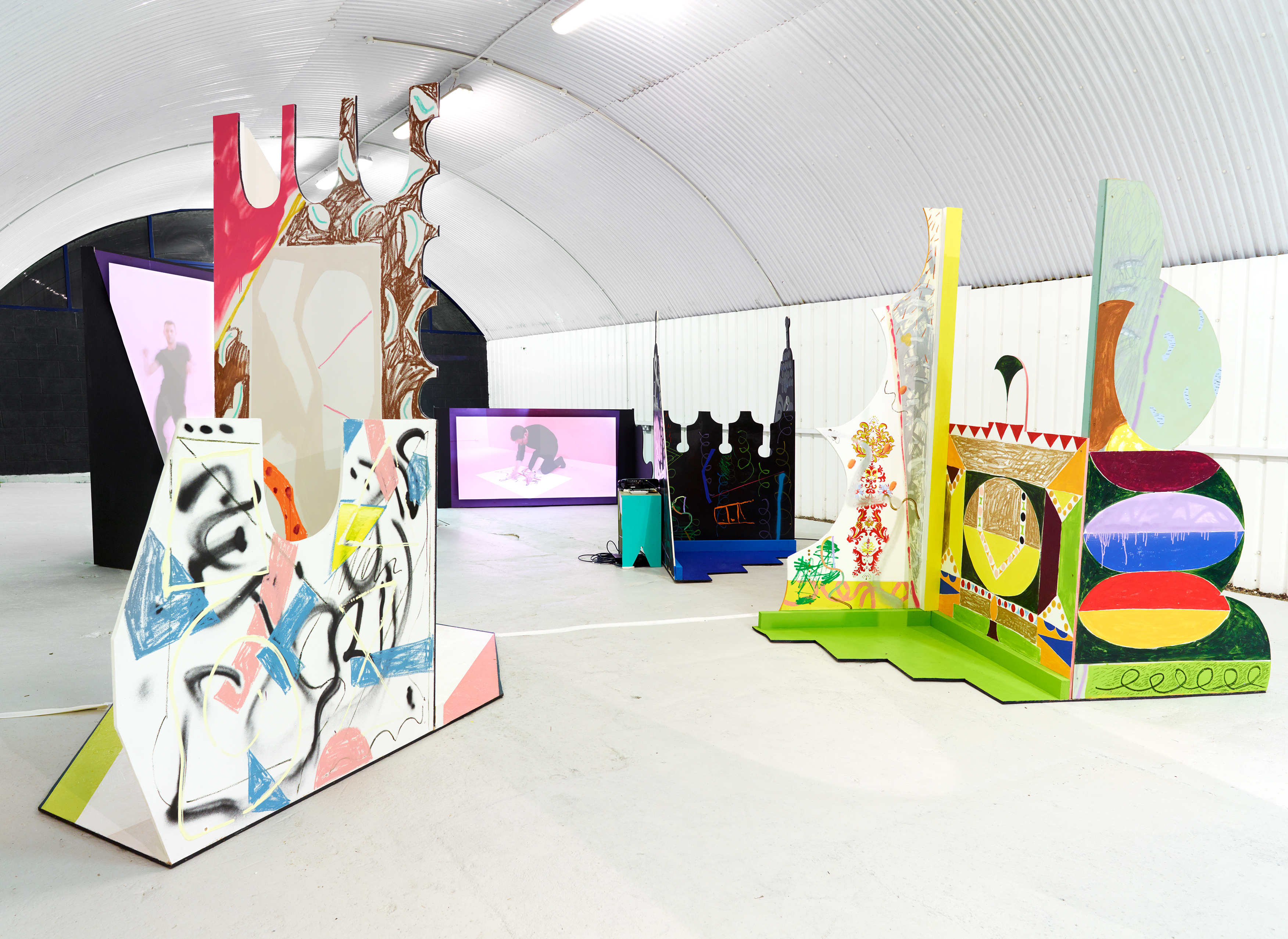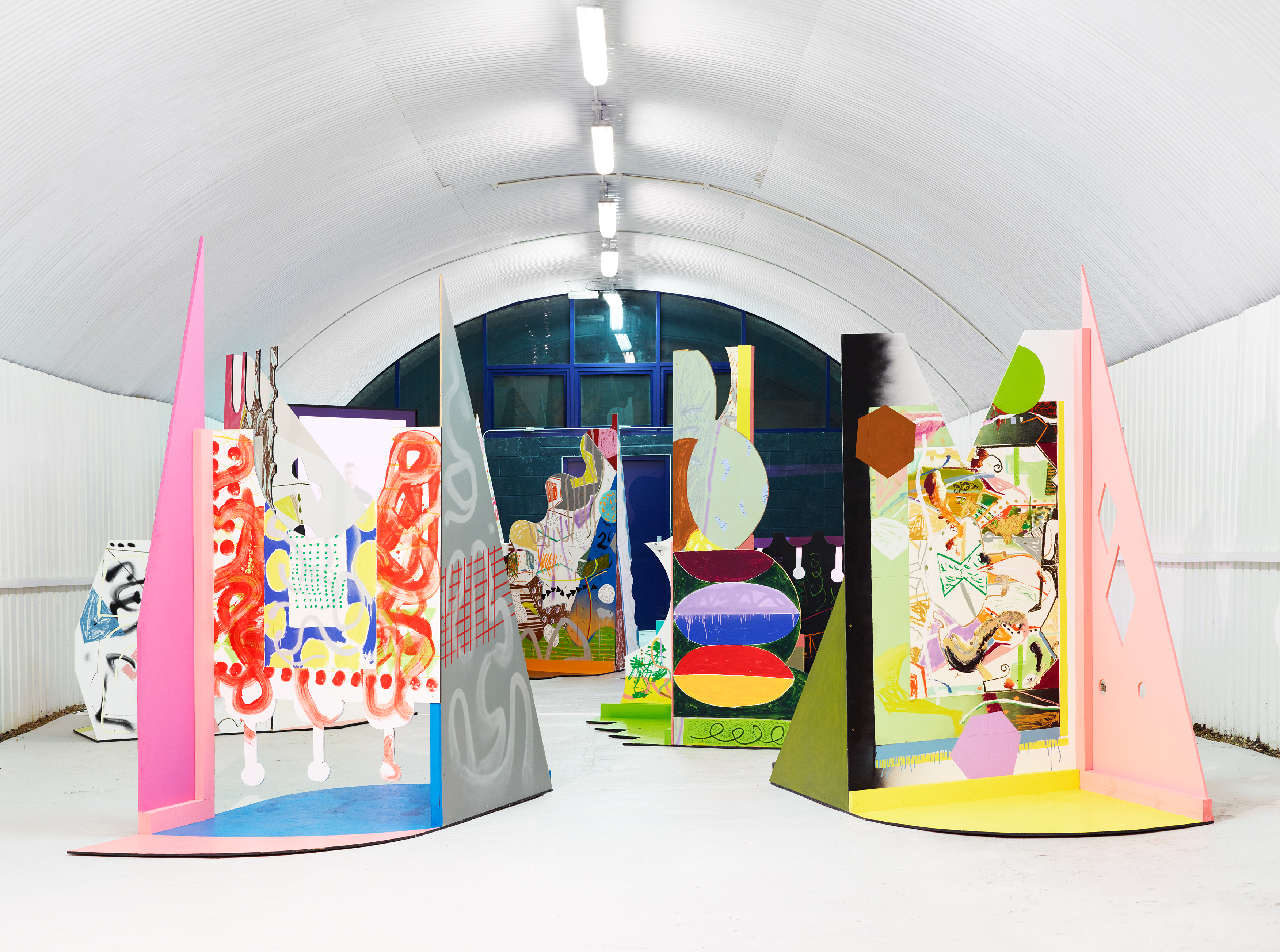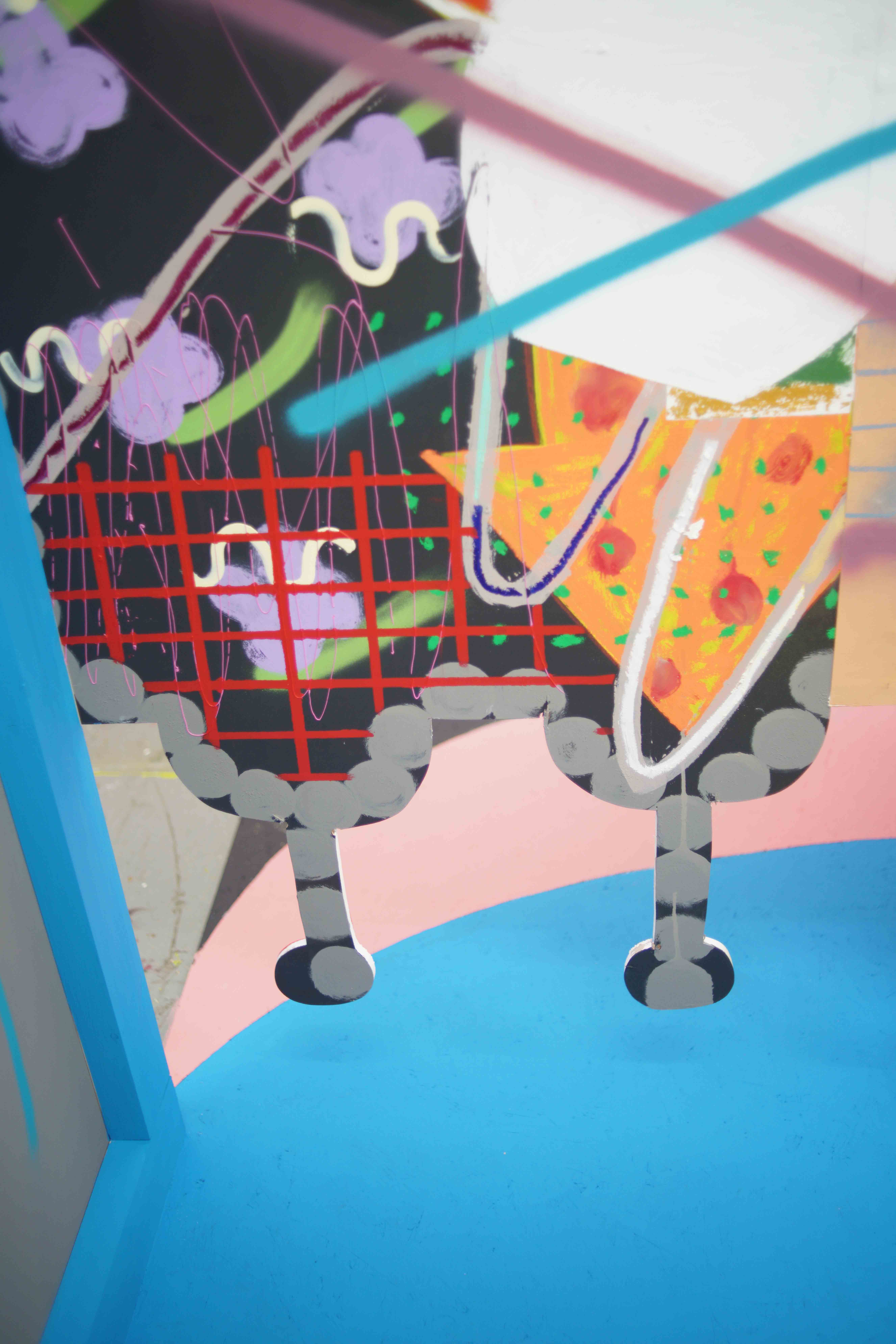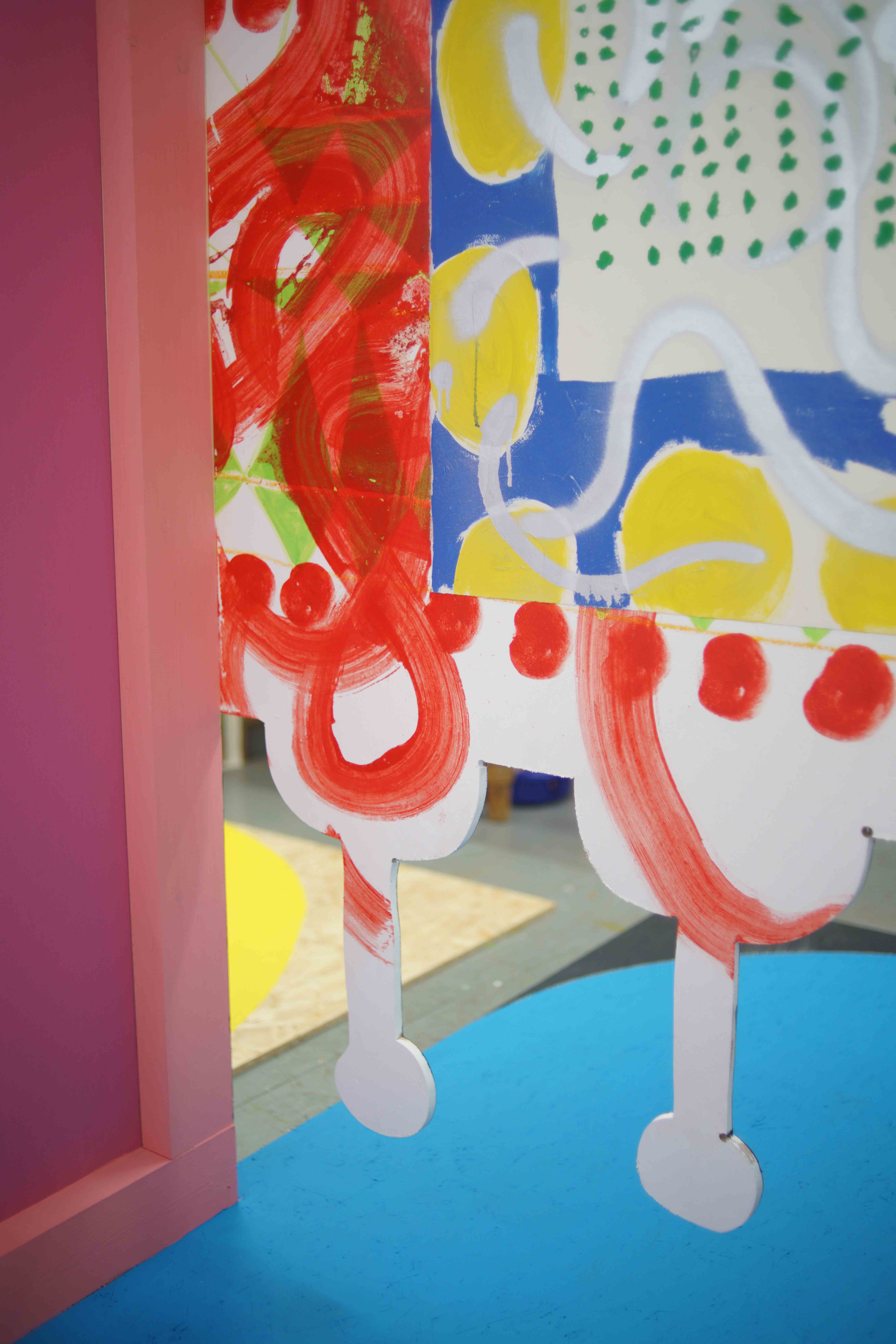
Can you tell me a bit about Do Be Do Be Do… ?
Do be do be do… is a collaboration, which interweaves the languages of dance and painting and uses, as a backdrop, the history of the old Vauxhall Pleasure Gardens. The final presentation, which will be an installation of film, performance, music and painting, will take place in Vauxhall, South London, adjacent to the historic site of the Gardens. The film, shot inside my studio, will explore the interactive creative process between the dancers and myself. We want to ask: when does drawing become dance and dance become drawing?
The film will be shown on two larger than life screens and one monitor on a continuous loop. Drawing on the eclectic and playful history of the Vauxhall Pleasure Gardens, the screens will be integrated into the installation’s architecture. The structure is a series of freestanding, architectural paintings, which will define the performance space and create the conditions for the audience and performers to interact. The performances will activate the space with live movement. The dancers and audience will share the physical space as well as the challenges of navigating the structure. The aim of the project is to place the artist’s creative process on an equal footing with the audience’s experience and curiosity.
How have you worked together with the choreographers on this? Was it quite an open process?
We spent a lot of time talking and trying things out in quite a playful way, both in my studio and in dance studios. We were able to share key aspects of our practice, which individually we felt to be significant and then try and find ways of exploring these together. There was always a sense of working towards an undefined goal, rather than fixing on something early on and then working out how to achieve it. So in that sense, yes it was a very open, playful process. It was very important to us that we didn’t attempt to interpret each other’s work, this would suggest to me a kind of standing back. The conversations that we had were about finding a structure within which we could entwine our individual practices. I became very interested in how the marks and gestures of dance and painting might discover a point of transference. This seemed like a really good starting point for both choreography and painting, in the sense that it started to blur the distinction between who was doing what. I became intrigued by the idea that the outcome of a graphic process might not be a mark on paper but a gesture in air made by another body; that the ‘painting’ was in this instance a ‘dance’.
So the question came up, ‘what would an exhibition of work made in this way look like?’ Would it be painting, film, dance, sound, or all of it? From a fairly early stage, I had in mind a very general architectural arrangement, which we could work with, creating a specific set of opportunities and limitations. The idea was that both artists and audience would be aware of this arrangement when making and experiencing the work. Our task was to discover how we would inhabit this space.
How will the piece transition through an imagined day at Vauxhall Pleasure Gardens, and how did you discover what this may originally have entailed?
An imagined day at the VPG is the springboard for a performance that will trace the day’s duration. The narrative of the choreography and music, will move from morning to night, light to dark… and light again, order to chaos, polite to dangerous, cultured to illicit. I am attracted by what I understand the visual language of the 18th century to have been. The Vauxhall Pleasure Gardens seem to offer a strange apotheosis of 18th century culture. It was fun to imagine what this might have looked, felt and sounded like and to try to entwine this history with what Vauxhall feels like now and in the more recent past. The Gardens of the 18th century presented highly ornamented stages for art, culture and pleasure. Amongst others, the work of Hogarth and Handel could be experienced in a fairground atmosphere. The Gardens were temporary stage sets offering fleeting experiences of London at its best; spaces, which were very much defined by those who inhabited them.
This piece explores the relationship between dance and painting, have you always viewed your painting practice to be performative in some way also?
I like to think of painting as a form of behaviour, as a way of being in and relating to the world, and as a way of provoking or generating behaviour; painting as an activity, which doesn’t necessarily have the making of an object as either its intention or outcome. I don’t want to replace one form of spectacle with another, to replace one way of looking with another. In a sense, I’d like what I do to have a reflexive relationship with an audience, to blur certain boundaries, between in here and out there, me and them, creator and audience, subject and object, being and doing. I don’t like to think of painting as some kind of personal struggle. I want a painting to be less about me, and what I think I know. I like the way a dancer is located in time and space, with one gesture following another. Each gesture is in essence irretrievable and impossible to erase, the choice is to either move on, or repeat and mutate.
Why is uncertainty so important for you to explore?
Art is a subjective and equivocal thing. It is better at asking questions than providing answers, offering propositions rather than solutions… and I like it for that. It also means that responses, outcomes and consequences are joyously unpredictable. Uncertainty is like an energy source, which hovers between the suspended stages of an evolving thing.
‘Do Be Do Be Do…‘ is showing at Sim Smith, Arch 147, Newport Street, London, SE11 6AY from 7 – 30 October, opening on 6 October with a performance at 8 p.m. Further performances 7 and 8 October, 8pm. Install images courtesy the artist and Sim Smith.





